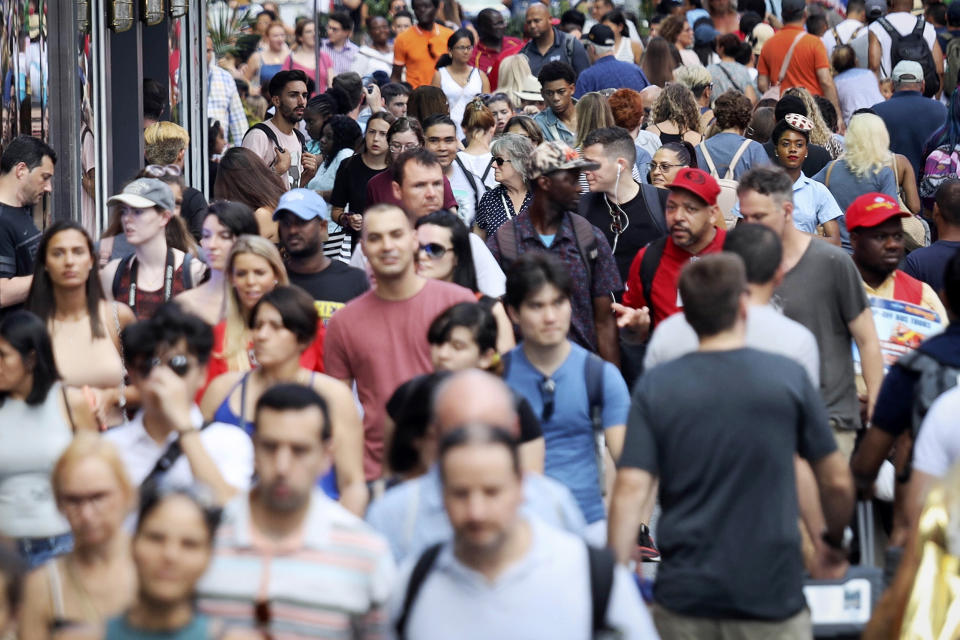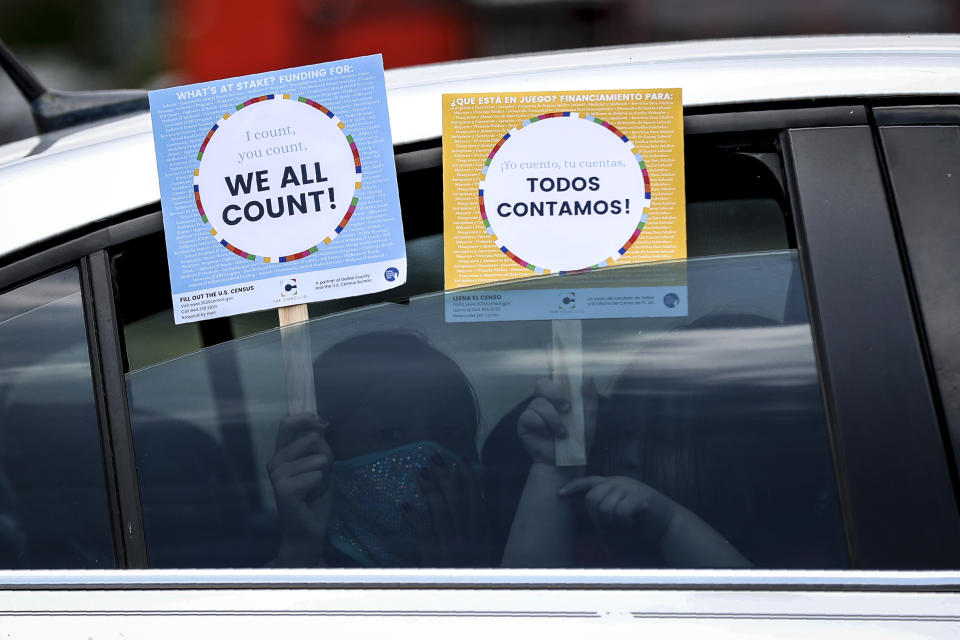Is there a better way to identify Latinos on official surveys? Some say yes.
Erika Prosper, who is Mexican American, remembers being unsure of how to fill out census forms for her family.
“I had never felt like I belonged to what was assumed to be the white population,” said Prosper, 48. “I had the responsibility of filling out the paperwork for my family as a young person. I remember consciously putting ‘other’ because we had been treated like an other.”
When the last census survey came around in 2020, she checked multiracial to reflect a mix of what she said is her Latine (a word some Latinos use to be inclusive) and Indigenous roots. "I don't think I'm alone," she said. Prosper's husband, San Antonio Mayor Ron Nirenberg, is of Ashkenazi Jewish descent from Eastern Europe and has Filipino, Malay, Indian and British roots.
Both may have many more specific options to select by the time the next census survey rolls out in 2030.
The Biden administration is working to update how it identifies American's race and ethnicity for official use. It is collecting public feedback on its Jan. 27 proposal to change the choice for people who identify as Hispanic or Latino or a version of those. Comments can be submitted through the federal website until April 12.
The federal government has been wrestling for decades with how to capture the complexity of the ever-increasing population of people with Latino or Hispanic roots. The ramifications of the proposed changes are wide, ranging from how people are asked about their identity on the census to how a local police officer would identify a person cited for a traffic violation.
The disproportionate impact of the pandemic on communities of color and lack of data from some states and locales to show their rates of illness, hospitalizations, vaccinations and deaths demonstrated the need for precision in gathering such information.
“States adopt what the federal is doing. Your schools, your law enforcement, all of these ... are taking their cues from what the government is doing,” said Julie Dowling, author of “Mexican Americans and the Question of Race.”

The Biden administration's Office of Management and Budget is proposing to ask people "What is your race or ethnicity?" and follow that with "Select all that apply."
In a shortened question, there would be boxes to check next to the choices of "White," "Hispanic or Latino" "Black or African American," "Asian," "American Indian or Alaska Native," "Middle Eastern or North African," and "Native Hawaiian or Pacific Islander."
An alternative proposal is a longer question that provides detail under each choice. For example, after Hispanic or Latino, a respondent could check a box for Mexican or Mexican American, a box for Puerto Rican and so on. A write-in box also is provided.
Under the government's current standards, people were asked on the 2020 Census to first select whether they are Hispanic or non-Hispanic and for "yes" responses, of what origin: Mexican, Puerto Rican, etc. Then they were asked to pick their race, but Hispanic or Latino is not among those choices. About 26 million Hispanics, 42%, marked "some other race" on the census.
"The problem we have now is people get confused and they end up not even completing the race question. People think, I already indicated I'm Mexican, so why do I have to check another or some other race?" said Arturo Vargas, executive director of National Association of Latino Elected and Appointed Officials or NALEO.
"People also get confused because they consider their Latino-ness to be their identity," Vargas said.
That turmoil over identifiers is reflected in the evolution of census forms, that didn’t have a Hispanic identity question on the short form until 1980. “Mexican” was put on the census in 1930, but then removed before the next census amid protests from Mexican American activists and Mexico, said Julie Dowling, author of “Mexican Americans and the Question of Race.”
In latter years, “people saw data as a source of power. Having data was a way that you could argue and advocate for your community,” Dowling said.
Jathan Melendez, 24, is a lead youth organizer at Community Coalition, a south Los Angeles group working against systematic racism and for improved Black-Latino relationships. Growing up as a biracial Black man with family heritage from Honduras, Guatemala and Belize, Melendez said he feels “put in a box” with the current, limited racial options.
“It was always hard to choose — there were times where I would identify as Black and there were also times where I would identify as Central American,” he said. “I had to put ‘other’ and just specify that I was Central American just so that I feel comfortable in that moment.”
Asked how he'd respond with the proposed options, Melendez said he would “still choose Black because I would fear that my identity as a Central American on paper will limit the opportunities or resources or the voice of the Black community because I chose not to identify as Black.”

The identifiers are critical for enforcing civil rights, Vargas said, noting that the first use of new census data is for redistricting. "We need to know where do Latinos, where do African Americans live, essentially so we can draw districts that comply with the Voting Rights Act."
"If we have 40% of Latinos say they are of some other race, that doesn't help you ... figure out racially what these Latinos are, since they are identifying in a nonexistent category," he said.
Mark Hugo Lopez, director of race and ethnicity research at the Pew Research Center, explained that for some, Hispanic or Latino is a race, for others it is a identity that is distinct, derived from the countries they are from, their ethnicity and their families' origins and not tied to race.
“Race and ethnicity is seen differently and viewed differently than it is here in the United States,” Lopez said. “One of the concerns with this particular change — is not only the identification of the racial and ethnic distribution among Latinos, but also whether or not we might lose something in the counts of Hispanics.”
There has been disagreement among Latinos on whether the one-question format was the best way to go. Vargas said NALEO had to be persuaded and was, by research showing the combined question yielded more complete data on Latinos.
But Nancy Lopez, a professor of sociology at the University of New Mexico, says the proposal is problematic. She suggests a box for "Brown" category.
"If we collect Hispanic data just as race data then we erase Black Latinos because what we're saying is, well, there's a Latino race, and you guys are mixed race or something. It's ridiculous," said Lopez, a daughter of Dominican immigrants.
The proposed single question will prohibit seeing different levels of segregation among Latinos and dilute data on the diversity of Latinos, she said. Lopez pointed to the example of actor Anna Taylor-Joy, who is Argentinian-Scottish, correcting reference to her in an article as a woman of color, when she identifies as a White Latina.
"When you have five boxes checked, who knows what they are going to do?" Lopez asked.
Benjamin Casar, 30, grew up in Houston and speaks Spanish. His family immigrated from Mexico during the mid to late 1980s and has heritage from parts of northern Africa, Spain and Hawaii.
Like Melendez, Casar struggled with choosing which race he should select in paperwork. He recalled asking his mom “What are we?” and “Which one do I pick?” when he was younger.
If the proposal to include Hispanic or Latino in the race and ethnicity choice were to go through, he said he would try to represent all of his family's cultures and check all that apply.
This article was originally published on NBCNews.com

